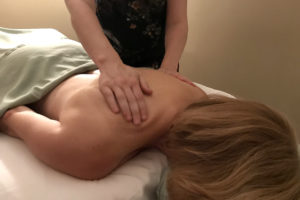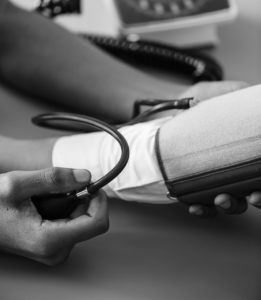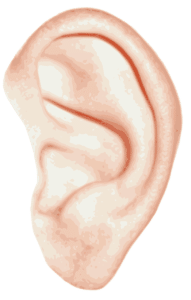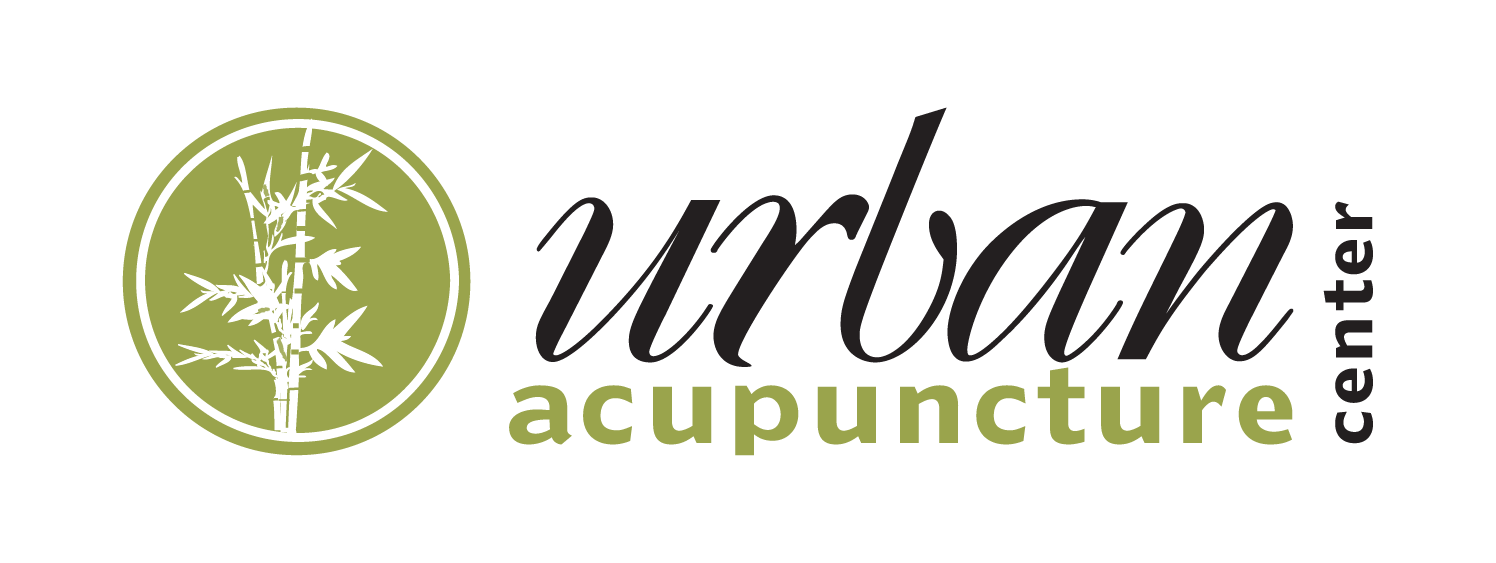by urban-acupuncture | Jul 5, 2019 | Massage Therapy
 There are many types of massage therapy, from classics like Swedish and deep tissue to more exotic styles like shiatsu. Whether you’d like to branch out a bit or have a health condition or injury, choosing a style of massage can be confusing if you’re not quite sure what it involves. Here is a list of the most popular types of massage (including some that may be new to you).
There are many types of massage therapy, from classics like Swedish and deep tissue to more exotic styles like shiatsu. Whether you’d like to branch out a bit or have a health condition or injury, choosing a style of massage can be confusing if you’re not quite sure what it involves. Here is a list of the most popular types of massage (including some that may be new to you).
There are several styles of massage. Some of the more common forms of massage are as follows:
There are many types of massage therapy, from classics like Swedish and deep tissue to more exotic styles like shiatsu. Whether you’d like to branch out a bit or have a health condition or injury, choosing a style of massage can be confusing if you’re not quite sure what it involves. Here is a list of the most popular types of massage (including some that may be new to you).
Swedish Massage Therapy
Swedish massage therapy is the modality that comes to mind when most people think about massage. As the best-known type of bodywork performed today, one of the primary goals of the Swedish massage technique is to relax the entire body. This is accomplished by rubbing the muscles with long gliding strokes in the direction of blood returning to the heart. But Swedish massage therapy goes beyond relaxation. Swedish massage is exceptionally beneficial for increasing the level of oxygen in the blood, decreasing muscle toxins, improving circulation and flexibility while easing tension.
Deep Tissue Massage
Deep tissue massage involves applying firm pressure and slow strokes to reach deeper layers of muscle and fascia (the connective tissue surrounding muscles) It’s used for chronic aches and pain and contracted areas such as a stiff neck and upper back, low back pain, leg muscle tightness, and sore shoulders.
Sports Massage
Sports massage can make a huge difference in the lives of those who work out frequently, train for marathons, or are active with their bodies on a daily basis. As professional athletes have understood for years, the benefits of regular sports massage include reducing fatigue, relieving muscle swelling and tension, and helping to prevent injury from muscle overextension and overuse. The result? Faster recovery, and better performance.
In addition, sports massage can also increase flexibility before a sporting event by warming up the major muscle groups. Post-event, sports massage aids in recovery by limbering the muscles and reducing the amount of lactic acid build-up. And let’s not forget the benefits to your focus and relaxation!
Neuromuscular Massage
Neuromuscular therapy is a form of soft tissue manipulation that aims to treat underlying causes of chronic pain involving the muscular and nervous systems. This medically-oriented form of massage addresses trigger points (tender muscles points), circulation, nerve compression, postural issues, and biomechanical problems that can be caused by repetitive movement injuries.
Acupressure
Acupressure is often called acupuncture without the needles. Instead of needles, acupressure involves the application of manual pressure (usually with the fingertips) to specific points on the body.
According to the principles of traditional Chinese medicine, the body has invisible lines of energy flow called meridians. There are thought to be at least 14 meridians connecting our organs with other parts of the body. Acupuncture and acupressure points lie on those meridians.
If the flow of energy (also called “chi” or “qi”) is blocked at any point on a meridian, it’s thought to cause various symptoms and health conditions anywhere along the meridian. That’s why a practitioner may apply pressure to an acupressure point on the foot to relieve a headache.
Percussion (Oscillating) Massage Therapy
Percussion massage is a breakthrough treatment for soft tissue pain and soreness through the use of a tool that provides rapid, short duration pulses deep into the soft tissues of the body. … Percussive massage also provides a gentle stretch to the muscles and connective tissues improving responsiveness and performance.
Cranial Sacral Therapy
Cranial sacral therapy (CST) is sometimes also referred to as craniosacral therapy. It’s a type of bodywork that relieves compression in the bones of the head, sacrum (a triangular bone in the lower back), and spinal column.
CST is noninvasive. It uses gentle pressure on the head, neck, and back to relieve the stress and pain caused by compression. It can, as a result, help to treat a number of conditions.
It’s thought that through the gentle manipulation of the bones in the skull, spine, and pelvis, the flow of cerebrospinal fluid in the central nervous system can be normalized. This removes “blockages” from the normal flow, which enhances the body’s ability to heal.
For more information about how acupuncture and other treatments can help you, please contact the Urban Acupuncture Center Board Certified Licensed Acupuncturist’s team at Indianola Ave, Clintonville (614) 725-2488 | Main St, Westerville (614) 426-4406 or click here. Taking new patients in and around greater Columbus, Ohio.
by urban-acupuncture | Jul 1, 2019 | Acupuncture Columbus
Lower Your High Blood Pressure
 An estimated 70 million U.S. adults — one in three — have high blood pressure (hypertension), according to the U.S. Centers for Disease Control and Prevention. It’s believed that only half have their condition under control. High blood pressure can lead to stroke and heart disease. High blood pressure is defined as extreme pressure or tension in the arteries that carry blood from the heart to the rest of the body. One of the most dangerous aspects of hypertension is that it has no recognizable symptoms which make it difficult to diagnose it. Factors such as obesity, too much alcohol consumption or excessive smoking increases the risk of hypertension.
An estimated 70 million U.S. adults — one in three — have high blood pressure (hypertension), according to the U.S. Centers for Disease Control and Prevention. It’s believed that only half have their condition under control. High blood pressure can lead to stroke and heart disease. High blood pressure is defined as extreme pressure or tension in the arteries that carry blood from the heart to the rest of the body. One of the most dangerous aspects of hypertension is that it has no recognizable symptoms which make it difficult to diagnose it. Factors such as obesity, too much alcohol consumption or excessive smoking increases the risk of hypertension.
Acupuncture, an ancient Chinese therapy, is increasingly viewed as a possible alternative, the researchers said in background notes with the study. Practitioners insert thin needles into key points on the body in an attempt to rebalance the flow of energy.
Acupuncture Study
Studies suggest that a form of acupuncture may benefit patients with high blood pressure and lower their risk of stroke and heart disease. 70% of treated patients experienced noticeable drop in blood pressure.
Researchers studied patients between the ages of 32 and 65 who were taking blood pressure medication for the treatment of high blood pressure. Prior research demonstrates that nitric oxide (NO) levels are directly related to blood pressure levels and therefore the effect of acupuncture on NO levels were also investigated. The researchers found three important changes in the patients. The systolic and diastolic blood pressure levels were reduced and the NO concentration increased.
A total of ten acupuncture visits of manual acupuncture were administered to each patient at a rate of one acupuncture treatment per week. Although standard care in a typical clinic involves a custom acupuncture point prescription based on differential diagnostics, this study administered the same acupuncture points to every patient in the study. The acupuncture points were: Yintang, ST36, SP6, HT7, LI4, SP9, LV3, K3. This standards acupuncture point prescription was successful in achieving significant clinical results. The investigators concluded that acupuncture is effective in lowering blood pressure levels for patients with hypertension.
For more information about how acupuncture and other treatments can help you, please contact the Urban Acupuncture Center Board Certified Licensed Acupuncturist’s team at Indianola Ave, Clintonville (614) 725-2488 | Main St, Westerville (614) 426-4406 or click here. Taking new patients in and around greater Columbus, Ohio.
by urban-acupuncture | Jul 1, 2019 | Acupuncture Columbus
Tinnitus Treatment with Acupuncture
 Researchers find acupuncture and Traditional Chinese Medicine herbs effective for the treatment of tinnitus (ringing of the ears).
Researchers find acupuncture and Traditional Chinese Medicine herbs effective for the treatment of tinnitus (ringing of the ears).
What is Tinnitus?
Tinnitus is a medical symptom that can indicate damage to your ear or auditory system. It’s often described as ringing in the ears, but you could hear other sounds, such as buzzing, clicking, roaring, or humming.
For some, tinnitus comes and goes. For others, it can last for hours or days at a time. Regardless of how long it lasts, tinnitus can be a major disruption to your daily life, making it hard to concentrate or sleep.
Evaluate and treat underlying problems of Tinnitus
If you develop tinnitus, it’s important to see your clinician. She or he will take a medical history, give you a physical examination, and do a series of tests to try to find the source of the problem. She or he will also ask you to describe the noise you’re hearing (including its pitch and sound quality, and whether it’s constant or periodic, steady or pulsatile) and the times and places in which you hear it. Your clinician will review your medical history, your current and past exposure to noise, and any medications or supplements you’re taking. Tinnitus can be a side effect of many medications, especially when taken at higher doses.
Musculoskeletal factors — jaw clenching, tooth grinding, prior injury, or muscle tension in the neck — sometimes make tinnitus more noticeable, so your clinician may ask you to tighten muscles or move the jaw or neck in certain ways to see if the sound changes. If tight muscles are part of the problem, massage therapy may help relieve it.
Tinnitus that’s continuous, steady, and high-pitched (the most common type) generally indicates a problem in the auditory system and requires hearing tests conducted by an audiologist. Pulsatile tinnitus calls for a medical evaluation, especially if the noise is frequent or constant. MRI or CT imaging may be needed to check for a tumor or blood vessel abnormality.
Your general health can affect the severity and impact of tinnitus, so this is also a good time to take stock of your diet, physical activity, sleep, and stress level — and take steps to improve them. You may also be able to reduce the impact of tinnitus by treating depression, anxiety, insomnia, and pain with medications or psychotherapy.
How Acupuncture Benefits Patients with Tinnitus
In Chinese medicine, the kidney-bladder network governs hearing and the ears. Tinnitus, then, is often associated with progressive kidney weakness brought on by overstrain, lack of sleep, and excessive sexual activity. Negative emotions are also often associated with tinnitus. Anger, frustration, resentment, and hatred block the liver energy, which over time produces fire rising up to the head, which disrupts hearing.
In many people, tinnitus is an expression of a much deeper disharmony that has been slowly and gradually evolving. For these patients, the treatment options will include acupuncture and herbal therapies to nourish the body at a deeper level. For others, tinnitus may be a side effect of medications or exposure to loud noise. These patients may respond well to acupuncture therapy alone. Traditional Chinese medicine not only addresses the symptom or the tinnitus (referred to as the branch), but also the underlying imbalance (or the root). By treating the root, the actual disharmony is broken and the body returns to optimal health.
Acupuncture can reduce symptoms of tinnitus in some cases. It’s particularly effective for ones that might be associated with hypertension because of its effect with blood circulation. It may help pain conditions such as chronic neck pain or TMJ.
For more information about how acupuncture and other treatments can help you, please contact the Urban Acupuncture Center Board Certified Licensed Acupuncturist’s team at Indianola Ave, Clintonville (614) 725-2488 | Main St, Westerville (614) 426-4406 or click here. Taking new patients in and around greater Columbus, Ohio.
 There are many types of massage therapy, from classics like Swedish and deep tissue to more exotic styles like shiatsu. Whether you’d like to branch out a bit or have a health condition or injury, choosing a style of massage can be confusing if you’re not quite sure what it involves. Here is a list of the most popular types of massage (including some that may be new to you).
There are many types of massage therapy, from classics like Swedish and deep tissue to more exotic styles like shiatsu. Whether you’d like to branch out a bit or have a health condition or injury, choosing a style of massage can be confusing if you’re not quite sure what it involves. Here is a list of the most popular types of massage (including some that may be new to you).
 An estimated 70 million U.S. adults — one in three — have high blood pressure (hypertension), according to the U.S. Centers for Disease Control and Prevention. It’s believed that only half have their condition under control. High blood pressure can lead to stroke and heart disease. High blood pressure is defined as extreme pressure or tension in the arteries that carry blood from the heart to the rest of the body. One of the most dangerous aspects of hypertension is that it has no recognizable symptoms which make it difficult to diagnose it. Factors such as obesity, too much alcohol consumption or excessive smoking increases the risk of hypertension.
An estimated 70 million U.S. adults — one in three — have high blood pressure (hypertension), according to the U.S. Centers for Disease Control and Prevention. It’s believed that only half have their condition under control. High blood pressure can lead to stroke and heart disease. High blood pressure is defined as extreme pressure or tension in the arteries that carry blood from the heart to the rest of the body. One of the most dangerous aspects of hypertension is that it has no recognizable symptoms which make it difficult to diagnose it. Factors such as obesity, too much alcohol consumption or excessive smoking increases the risk of hypertension. Researchers find acupuncture and Traditional Chinese Medicine herbs effective for the treatment of tinnitus (ringing of the ears).
Researchers find acupuncture and Traditional Chinese Medicine herbs effective for the treatment of tinnitus (ringing of the ears).